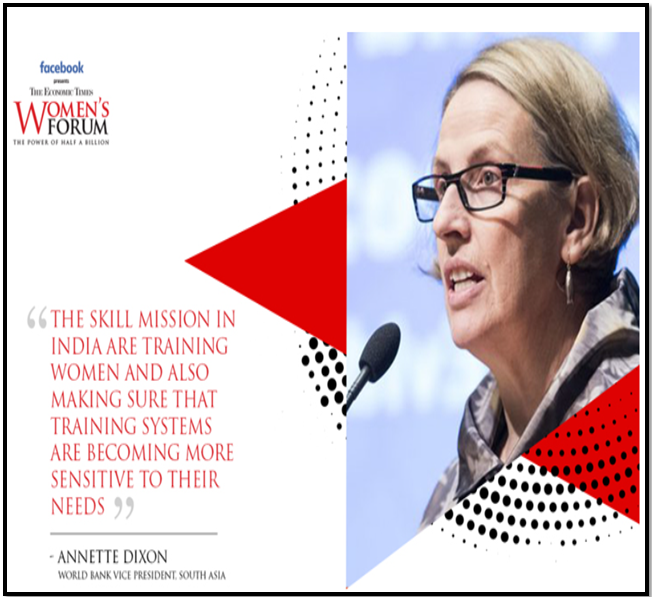ANSWERS ARE IN OUR HISTORY
Syllabus:
- GS 2: Issues related to women
Why in the News?
India’s poor ranking (142 out of 146) in the World Economic Forum’s 2024 Global Gender Gap Index highlights ongoing issues of economic inequality and women’s rights, rooted in historical struggles.
Source: Indian Express
Introduction
- For over a century, Indian women activists have championed social, political, and economic empowerment, recognizing that financial independence is crucial for true freedom.
- Despite their early efforts, the struggle continues, with India still lagging in gender equality.
| Hansa Mehta: Pioneer of Women’s Rights and International Diplomacy
Early Life
Education
Activism and Political Involvement
International Contributions
|
A Century of Advocacy for Women’s Empowerment
Early Campaigns and Financial Dependency
- Over a hundred years ago, Indian women activists began pushing for social, political, and economic empowerment.
- They worked in both rural and urban settings, discovering that women’s independence was often limited by their need for male approval and financial dependence on men.
Progressive Ideas and Ongoing Issues
- To combat systemic oppression, these activists proposed advanced ideas, many of which were ahead of their time.
- Despite these efforts, achieving true empowerment remains a challenge, with many of their proposed solutions still not fully realized.
Ongoing Challenges for Women’s Rights
Persistent Issues
- The rights of women workers in the informal sector and the recognition of unpaid household work were crucial issues for early activists.
- Despite these long-standing efforts, progress remains slow.
Current Status
- The 2024 Global Gender Gap Index by the World Economic Forum ranks India 142nd out of 146 countries in economic participation and opportunity.
- Economic freedom is essential for women’s freedom, yet societal norms still place them under the control of male breadwinners.
Early Women’s Activism in India
Founding and Focus
- Founded in 1917, the Women’s Indian Association was India’s first national women’s organization, aiming to address women’s issues.
Key Actions
- Its publication, Stri Dharma, highlighted the struggles of women, including factory workers.
- In 1927, there were about 253,000 women working in factories.
Legislative Impact
- Their activism led to the prohibition of night work for women and the Bombay Maternity Benefit Act of 1929, which provided eight weeks of wages (four weeks before and after delivery).
Requested Reforms
- Women activists sought additional reforms including time off during advanced pregnancy, six weeks’ leave post-delivery, and medical supervision for female employees.
Rejections and Current Challenges
- These requests were denied due to insufficient public support, the migratory nature of workers, and supervision difficulties.
- Similar issues persist today when advocating for the rights of women workers in the informal sector.
Historical Advocacy for Women’s Rights
Hansa Mehta’s Call for Economic Empowerment
- In her 1945 presidential address at the All-India Women’s Conference (AIWC), Hansa Mehta emphasized the need for women to fight for economic equality to secure their position in society.
- The conference resolved to study various constitutions and develop a rights agenda to address women’s challenges.
Indian Women’s Charter of Rights and Duties
- In 1946, the AIWC ratified the Indian Women’s Charter of Rights and Duties.
- The charter proposed significant reforms:
- Eliminating overcrowding in homes and setting minimum standards for housing.
- Ensuring separate kitchens and bathrooms in every home.
- Allowing women unrestricted access to employment.
- Including maternity benefits in a comprehensive social insurance scheme.
- These issues of unpaid household work and the right to leisure, highlighted by Mehta, continue to be relevant today.
Recommendations for Women’s Financial Security
Historical Recommendations
- Consent for Property Disposal: Husbands should not be able to dispose of their property without their wife’s consent.
- Income Rights for Homemakers: Homemakers should receive a share of their husband’s income, which they could use as they wish.
National Planning Committee Report
- In 1947, the National Planning Committee’s sub-committee on women, established by Subhas Chandra Bose in 1939, supported these ideas.
- The report:
- Called for equal employment opportunities for women.
- Advocated for a common civil code.
- Proposed gender-neutral inheritance laws.
Ongoing Challenges
- Social Conditioning: Despite legal amendments, deep-rooted social norms often undermine women’s rights, affecting their financial and social status.
- Societal Backlash: Women benefiting from equal rights often face criticism and resistance from traditional views within society.
- Unresolved Domestic Work Issues: The problem of unpaid household labour persists, as societal recognition and valuation of domestic work remain inadequate.
Conclusion
Despite historical progress, Indian women still face significant challenges. Addressing social conditioning and enhancing legal protections for unpaid domestic work are crucial. Comprehensive reforms and societal shifts are needed to achieve true gender equality and economic freedom.
Source:Indian Express
Mains Practice Question:
Discuss the reasons for the persistent gender gap in economic participation in India, despite legislative reforms aimed at improving women’s financial security.
Associated Article:
https://universalinstitutions.com/focus-on-female-employment-to-counter-unemployment/




